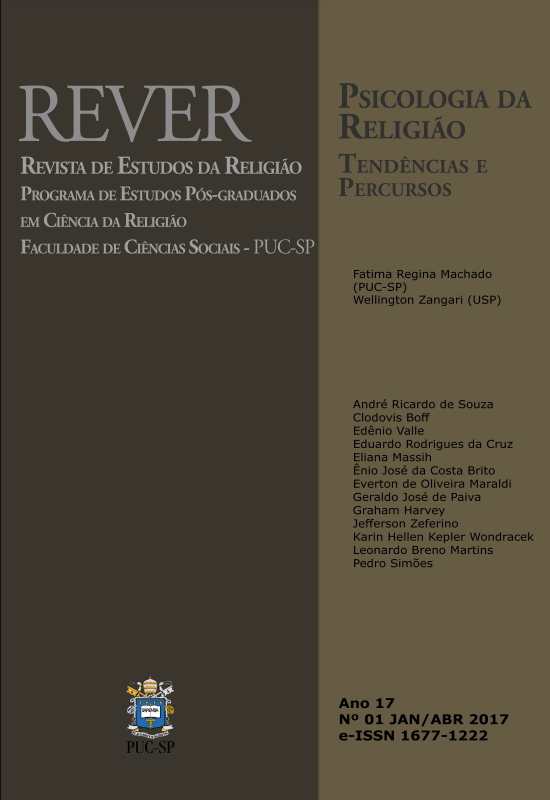Da Psicologia do Attachment à visão neurocientífica proposta por Lee A. Kirkpatrick sobre a religiosidade humana
DOI:
https://doi.org/10.23925/1677-1222.2017vol17i1a3Palavras-chave:
Lee Kirkpatrick, Nova Teoria do Apego, Psicologia Evolucionária, Neurociências, Psicologia da ReligiãoResumo
Lee A. Kirkpatrick é um dos nomes de maior destaque na Psicologia da Religião na atualidade. Sua importância como pesquisador e teórico se consolidou graças aos seus trabalhos empíricos sobre a Teoria do Apego (Attachment Theory), originalmente proposta por John Bowlby e Mary Ainsworth. Como esses dois pesquisadores, também Kirkpatrick sofreu a influência da Etologia neoevolucionista de Konrad Lorenz e dos acesos debates que se travaram na Psicanálise britânica do pós-guerra a respeito das relações do bebê com sua a mãe na fase em que a sua sobrevivência física e psicológica depende totalmente de quem dele cuida. O mérito principal de Kirkpatrick ao entrar nessa discussão foi o de aplicar com rigor a Teoria do Apego à religiosidade e a outros semelhantes estados anímicos experimentados não só pelo neonato. Em seus trabalhos há dois momentos distintos e complementares. No primeiro deles, o objeto de sua atenção se concentrou mais na relação de apego propriamente dita. Mais tarde, paralelamente ao grande avanço das Bio e Neurociências e da Psicologia Evolucionária, ele passou a dar ênfase aos processos e mecanismos neurofisiológicos e psicológicos que subjazem às reações psicocomportamentais da criança. Essa progressiva e coerente mudança de enfoque fez de Kirkpatrick um renomado pesquisador da Psicologia da Religião. O artigo apresenta ao leitor/a os dois estágios percorridos por ele em seu itinerário como estudioso da área da Psicologia da Religião.Downloads
Publicado
2017-05-01
Como Citar
Valle, E. (2017). Da Psicologia do Attachment à visão neurocientífica proposta por Lee A. Kirkpatrick sobre a religiosidade humana. REVER: Revista De Estudos Da Religião, 17(1), 18–39. https://doi.org/10.23925/1677-1222.2017vol17i1a3
Edição
Seção
Seção Temática
Licença
Autores que publicam nesta revista concordam com os seguintes termos:
- Autores mantém os direitos autorais e concedem à revista o direito de primeira publicação, com o trabalho simultaneamente licenciado sob a Licença Attribution-NonCommercial 4.0 International, que permite o compartilhamento do trabalho com reconhecimento da autoria e publicação inicial nesta revista.
- Autores têm autorização para assumir contratos adicionais separadamente, para distribuição não exclusiva da versão do trabalho publicada nesta revista (ex.: publicar em repositório institucional ou como capítulo de livro), com reconhecimento de autoria e publicação inicial nesta revista.


